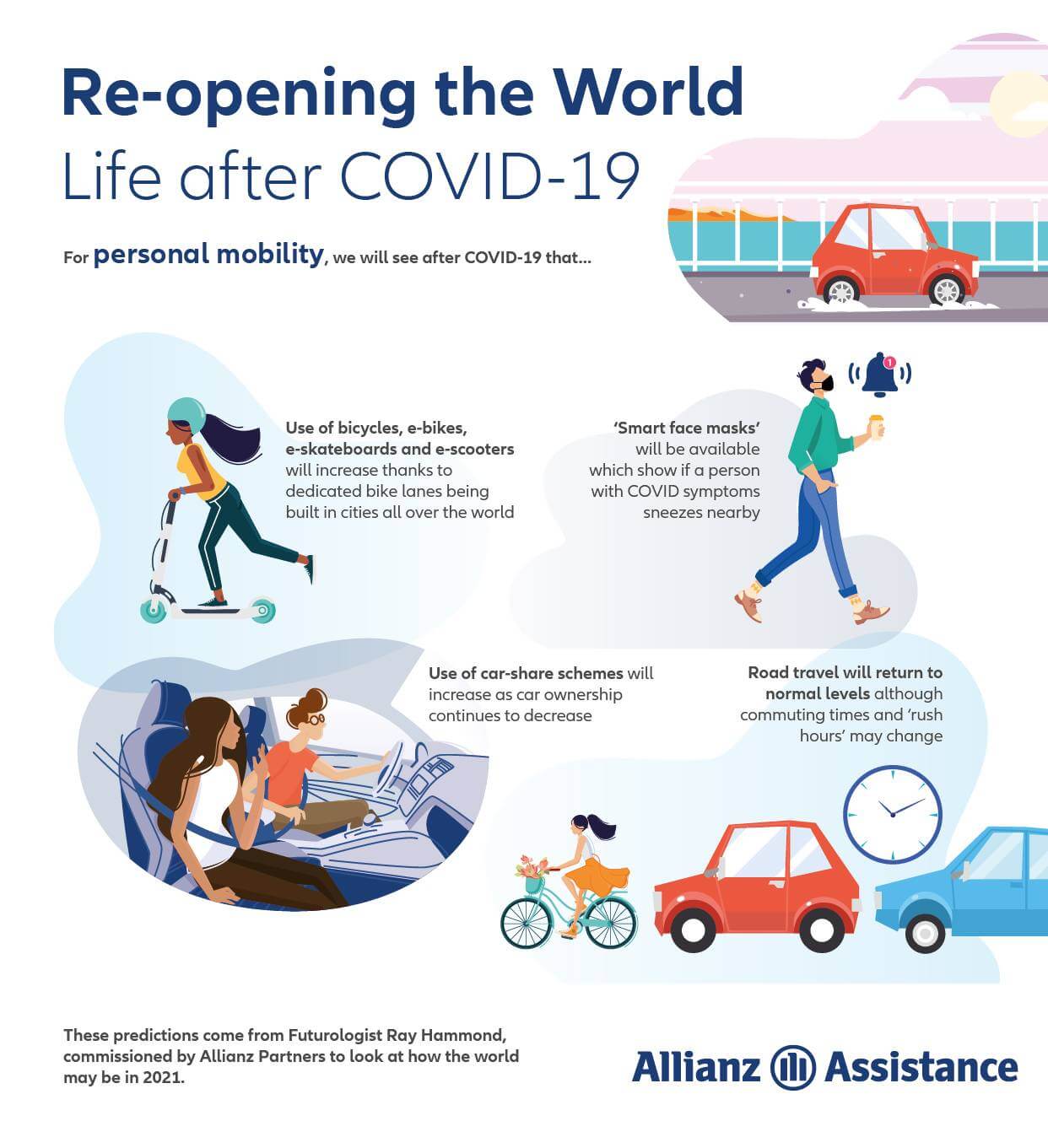Our colleagues at Allianz Partners ran a report that explores how personal mobility, travel, the home and healthcare may evolve in 2021 due to COVID-19. At Allianz Assistance, we recognise the importance of understanding the industries we operate within and informing our customers of the future of mobility in these changing times.
With the end of the global pandemic predicted to come in December 2021, a new way of living will emerge and the world will be very different. Allianz Partners have commissioned Futurologist Ray Hammond to talk through the anticipated patterns of change which are likely to shape the future of our world.
Below are the key findings from Hammond on mobility in the future. He stated that road travel will return to normal levels post-lockdown, with major cities around the world continuing to reorganise infrastructure to encourage the use of micromobility by the citizens who live and work there.
A shift towards more sharing and flexible mobility
The mobility of people in the UK and around the world has been affected by the COVID-19 pandemic in many ways. Be that closure of many shops, a reduced service or an understandable reluctance to use public transport due to the concern around the spreading virus.
During the COVID-19 lockdowns, people have discovered that they have other options available to them in terms of personal mobility:
- Shopping online easily for food etc.
- Working from home more, raising the question of whether it makes sense to purchase a car to rent rather than using public transport, which is likely to accelerate the trend towards short-term car rental if purchasing a car isn’t suitable for people and increase the number of people using car sharing schemes.
- On public transport, the wearing of “smart face masks” will make it possible to identify people who are ill and the volume of passengers on trains will be reduced, meaning that many people have and will rethink their trips.
Changes in how we travel from A to B
In the past months, thousands of miles of new bike lanes have been built in cities which are being closed to traffic. Commuters around the world have started to use bicycles as they emerge from the lockdown. This will have a positive impact on the use of new modes of micromobility, such as bicycles, electric bicycles, e-skateboards and e-scooters (shared and owned) that enable people to get from A to B in ways that avoid using public transport, reducing greenhouse gas emissions and improving urban air quality.
At the same time, the authorities will have to provide charging points, create more bike lanes, and regulate using. They will have to ensure riders have the correct insurance, observe speed limits, wear helmets and dock shared mobility items responsibly. With increased usage, micromobility providers will also need to ensure the safety of riders by providing clear hygiene rules and safety tips.
We have seen several developments in the way we live due to COVID-19, and this report has highlighted that there are more changes to be made to ensure we are continuing to travel safely. To discover what changes have been predicted in areas such as mobility, the home and healthcare, download the full report, “Life after COVID-19” by Futurologist for Allianz Partners Ray Hammond, today.



